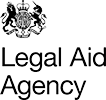New Building Safety Regulations In Force From 1 October 2023

In August 2023, the British Government comprehensively revised and altered different aspects of the Building Safety Act (BSA) 2022 and various building regulations. These changes took effect on 1 October 2023. While much has been discussed about the underlying motives behind these new regulations, especially in the wake of the Grenfell tragedy and Dame Hackitt’s subsequent report, it’s essential to understand how these changes practically impact your business. This article offers a concise overview of the reforms.
Details of the new building safety regulations
The newly implemented regulations are as follows:
- Building (Approved Inspectors etc and Review of Decisions) (England) Regulations 2023 – these amendments to the Building (Approved Inspectors etc) Regulations 2010 designate the Building Safety Regulator as the sole building control authority for all higher-risk buildings (HRBs).
- Building (Higher-Risk Buildings Procedures) (England) Regulations 2023 – these regulations provide in-depth specifics regarding the building control framework for HRBs during their design and construction phases or when alterations are made to existing HRBs.
- Building Regulations etc (Amendment) (England) Regulations 2023 – this regulation amends the Building Regulations 2010 to support the new control regime for HRBs. Notable changes encompass Regulation 6, introducing a new Part 2A, “Dutyholders and competence,” into the BR 2010.
- The Building Safety Act 2022 (Consequential Amendments etc) Regulations – these regulations make consequential adjustments to various miscellaneous statutes and orders.
In conjunction with the introduction of these regulations, the Government also issued its response to the consultation on changes to the building control system under the BSA 2022 and relevant regulations. These changes are primarily focused on Higher Risk Buildings (HRBs), with the Government stressing its intention to impose additional requirements on all parties involved in the design and construction of HRBs.
An overview of the changes
Part 2A of the Building Regulations etc. (Amendment) (England) Regulations 2023 establishes new obligations and competence standards for clients, designers, and contractors. These requirements apply to all projects subject to the Building Regulations 2010. Clients are responsible for planning, managing, and overseeing the project in a way that meets compliance with the Building Regulations 2010. Designers and contractors cannot be employed until the client can confidently state that they meet the required competence standards. Principal designers and principal contractors with a coordinating role must fulfil further conditions before accepting or appointing their own contractors.
To meet these competence requirements, individual contractors or designers must possess the necessary skills, knowledge, experience, and behaviours to carry out their responsibilities. Those involved with the design and build must display the organisational competence to take on the project. Parties are likely to meet all the requirements; however, the amendments necessitate comprehensive documentation to establish a full audit trail.
The Building Regulations etc. (Amendment) (England) Regulations 2023 also introduce:
- Changes related to the process for building control approval concerning non-HRB projects. This replaces the previous ‘deposit of plans’ method.
- A strengthened definition of ‘commencement,’ addressing it in a more comprehensive manner and introducing provisions for the automatic termination of building control approval after three years if work hasn’t commenced.
- Strengthened provisions regarding fire safety information for building works subject to the Fire Safety Order.
The changes outlined in the Building (Higher-Risk Buildings Procedures) (England) Regulations 2023 align with those discussed in the recent Government responses to the consultation (referred to above). They cover:
- The requirement to provide full compliance documentation details at Gateway 2 (building control application stage) and Gateway 3 (completion certificate stage).
- Notification of specific changes to approved documents to the Building Safety Regulator (BSR), with significant document alterations necessitating BSR approval.
- The introduction of a mandatory safety reporting procedure for major incidents.
- The mandate to maintain a comprehensive electronic repository of approved documents, change control logs, mandatory occurrence reports, changes in the principal designer or principal contractor, and a draft Gateway 3, forming a ‘golden thread’ of information. Furthermore, the data must be transferable in an uncorrupted, readable, and intelligible format.
Timelines
In general, the amendments to the Building Regulations 2010 and the Approved Inspectors Regulations 2010 do not apply to building work that commenced or had an initial notice submitted to a local authority and was accepted or treated as accepted before 1 October 2023.
In summary
Numerous questions regarding the modifications to the building safety system will likely emerge as these new provisions become established. Nevertheless, it is imperative for businesses to anticipate a stringent approach from Regulators and the Courts concerning compliance breaches. Thus, it is crucial for your business to thoroughly comprehend these changes and establish policies and procedures to ensure compliance.
If you require legal advice concerning building safety or residential/commercial property development, please call our office today on 02476 231000 or email enquiries@askewslegal.co
Please note that this article is for information purposes only and does not constitute legal advice.









